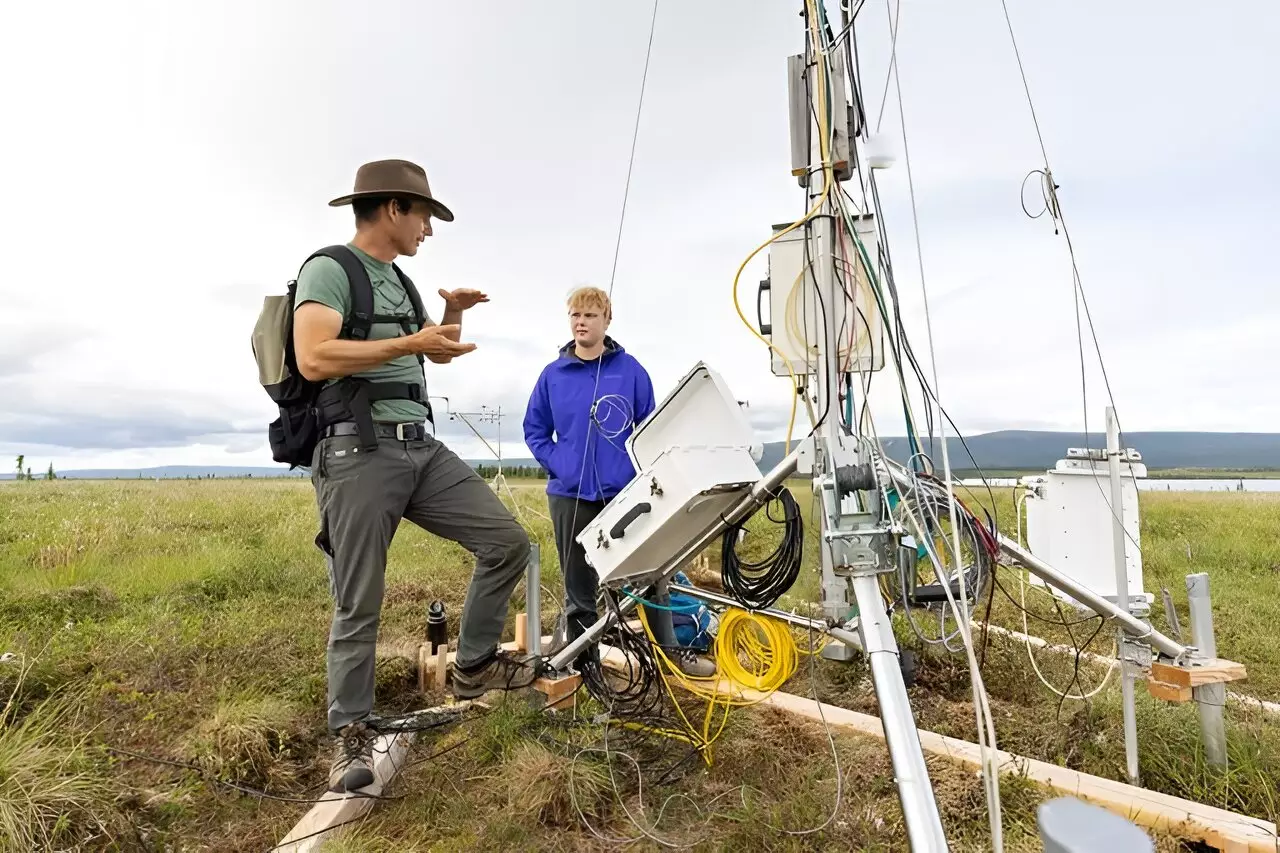The Arctic tundra, with its vast and intricate permafrost systems, serves as one of our planet’s most significant carbon reservoirs. Recent groundbreaking research led by Ted Schuur, a Regents’ Professor at Northern Arizona University, along with other experts within the Permafrost Carbon Network, sheds light on these ecosystems undergoing rapid transformation due to climate change. This region, while constituting only 15% of Earth’s soil area, intriguingly stores approximately one-third of the planet’s organic carbon. This duality highlights the critical role permafrost plays in the global carbon cycle and emphasizes the urgent need to understand how these ecosystems respond to rising temperatures.
The biological processes at play in these northern latitudes are uniquely complex. Carbon exists in a continuous flux, exchanged between the atmosphere and the biosphere through mechanisms such as photosynthesis and ecosystem respiration. Notably, permafrost ecosystems are experiencing alarming rates of warming—estimated at three to four times the global average. This situation drives an increase in respiration and carbon cycling, warranting immediate and keen attention from scientists and policymakers alike.
Implications of Accelerated Carbon Emissions
The findings from Schuur and his colleagues indicate that while human contributions to greenhouse gas emissions dominate the current climate crisis, permafrost regions are expected to contribute significantly more in the near future. It’s estimated that emissions from thawing permafrost could enhance climate change by a staggering 10% to 20% by the year 2100. This startling projection aligns with emissions from a large industrialized nation, indicating the dire consequences of neglecting these ecosystems in global climate policy.
Information from these studies explicitly reveals a troubling trend: the emissions anticipated from permafrost thawing have largely been overlooked in the emissions targets outlined by the Paris Agreement. This gap means that nations aiming to curb their greenhouse gas outputs will need to adopt more aggressive strategies to compensate for additional emissions from these critical regions. Without addressing this oversight, efforts to manage global warming could falter, further exacerbating an already precarious situation.
Understanding Carbon Cycling Dynamics
One of the studies conducted by Schuur’s research team provides compelling evidence of the nuanced carbon dynamics within permafrost systems. Over decades of collected data from 70 sites, researchers revealed an unsettling reality: permafrost areas are now releasing more carbon in fall and winter than before, offsetting gains made during the summer months. As Sue Natali, a senior scientist at Woodwell Climate Research Center, indicates, this indicates a systemic shift in how permafrost interacts with the climate.
Another enlightening study published in *Nature* utilized experimental greenhouses to simulate future warming conditions. Here, researchers observed a 30% increase in ecosystem respiration due to minimal temperature rises, implicating local environmental factors—such as nutrient availability—wholly in these variances. These findings indicate that permafrost not only acts as a carbon sink but is also morphing into a potential source of increased greenhouse gas emissions, propelling the very climate change we aim to mitigate.
The Challenge of Global Collaboration and Data Gaps
A further obstacle to effective research on Arctic tundra lies in the collaborative nature of global scientific inquiry, particularly in the context of geopolitical tensions. The ongoing conflict stemming from Russia’s invasion of Ukraine led to significant disruptions involving monitoring sites in critical permafrost study areas. Research indicates that the loss of access to 27 Russian sites could compromise up to 55% of landscape variance data, creating a considerable gap in our understanding of permafrost carbon flux.
To counteract this gap, Schuur and his team propose constructing new sites in North America to gather comparable data. Though this solution could recover about 80% of the lost information, it won’t fully replace the unique environmental data native to Russian ecosystems. The implications of this loss stretch beyond mere data collection, as our understanding of global carbon dynamics is intricately dependent on these comprehensive datasets.
The Road Ahead: Data-Driven Policy Development
As research into permafrost continues to evolve, the importance of accurate carbon cycling data becomes ever clearer. With each new study, scientists unveil more components of the complex interplay between temperature, organic matter, and microbial activity in these fragile ecosystems. These insights will undoubtedly play a critical role in informing global environmental policy, enabling countries to realistically address climate change amid dynamic, oft-unpredictable natural systems.
The intricate ballet between climate change and permafrost ecosystems is unfolding at a pace that demands responsive and informed action from all quarters of society. Through a combination of innovative research, technology, and international cooperation, we may still safeguard both the future of our planet and the precious carbon reserves held within the Arctic’s frozen soils.

